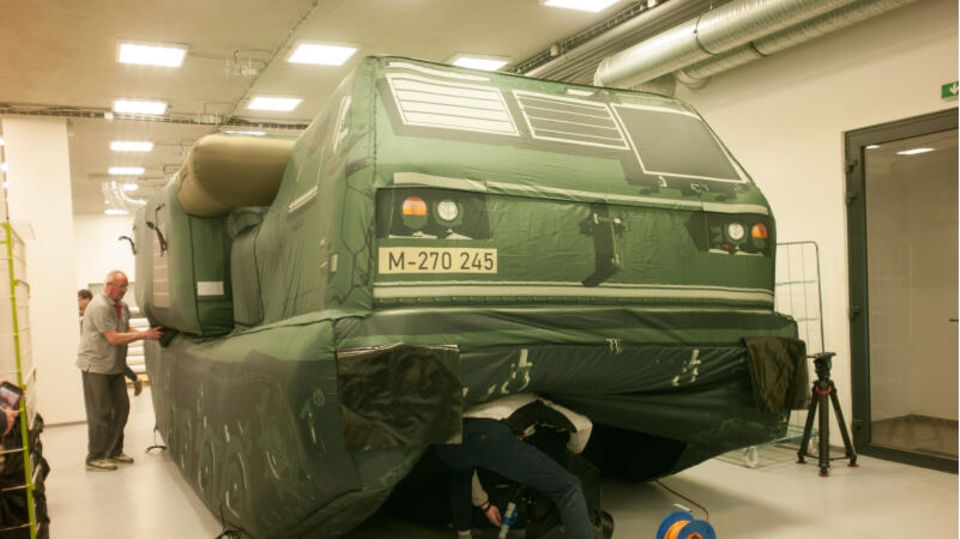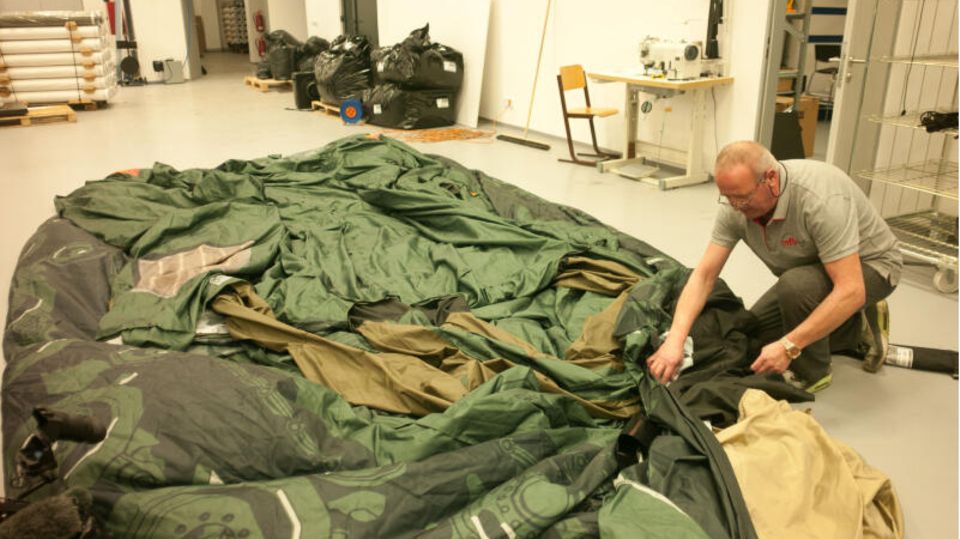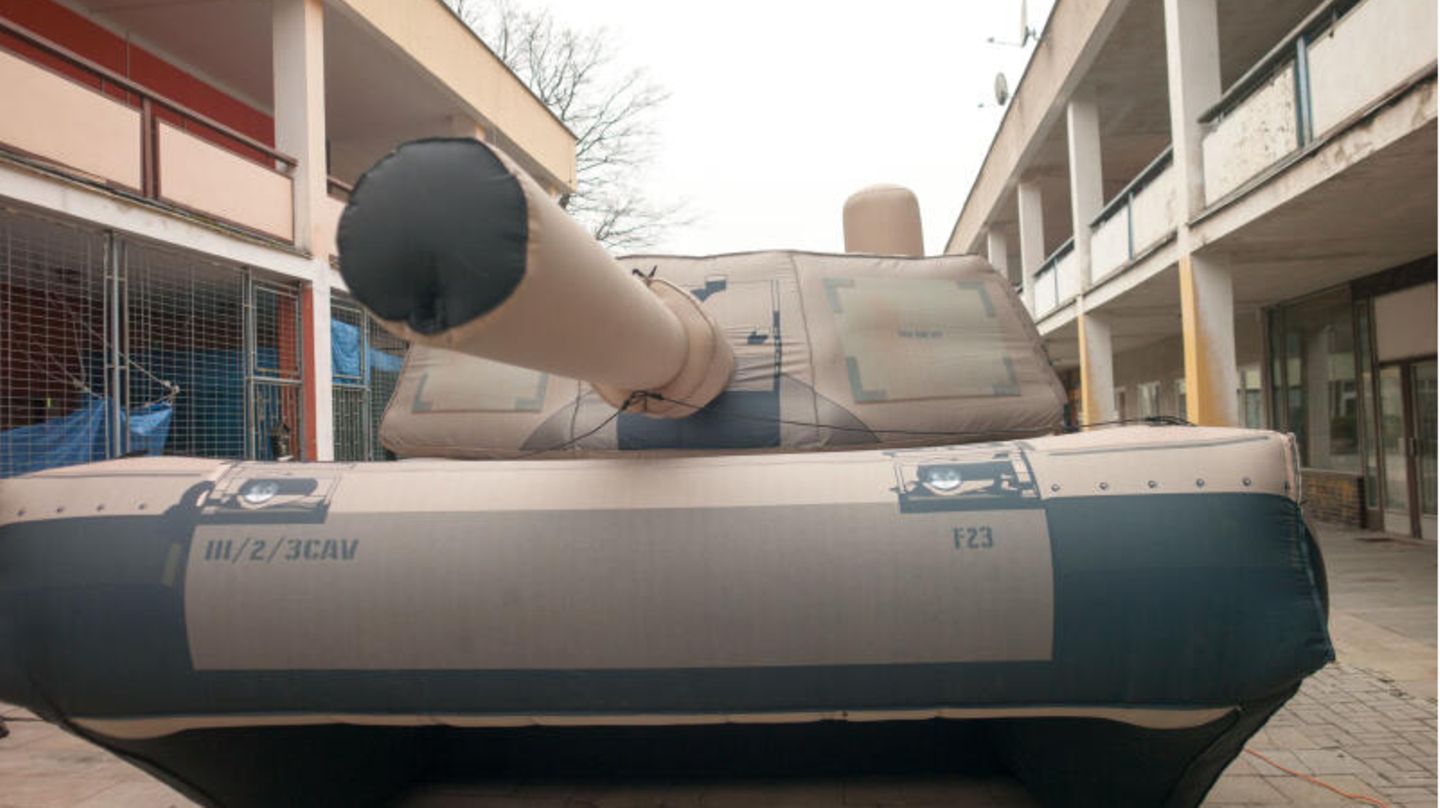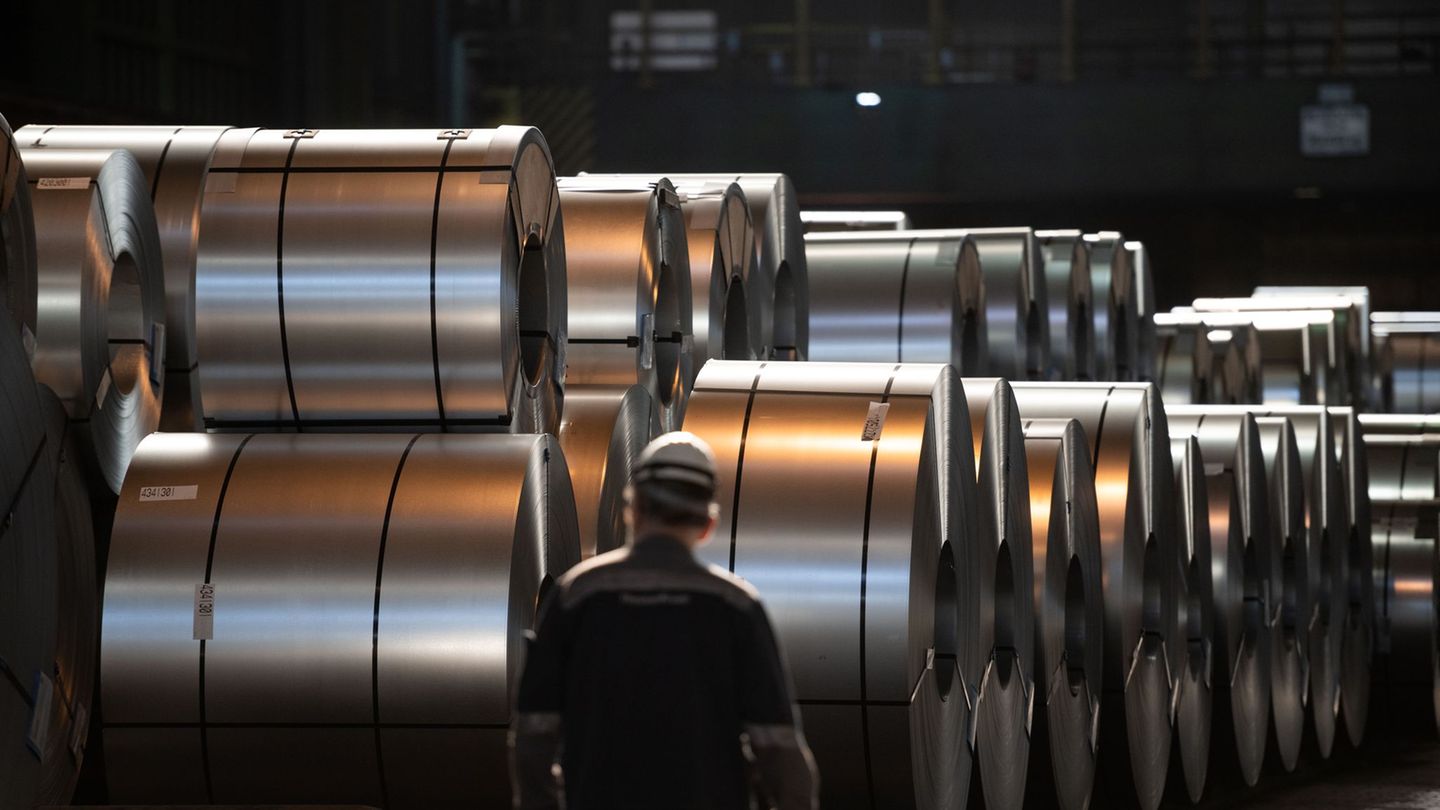The art of war involves trying to deceive the enemy. A company from the Czech Republic builds tanks from artificial silk and air, also for the Ukraine. In view of the tense security situation in Europe, the order books are full.
If a US rocket launcher is spotted on the battlefield, it might come from a factory in the Czech Republic – and it’s just a copy. In a hall in the border town of Decin, seamstresses sit at machines to sew lengths of green fabric together. You work for the company Inflatech, which makes inflatable dummies of heavy military vehicles. For a year now, since the Russian war of aggression against Ukraine began, there has been more work here than before.
Much is top secret. According to managing director Vojtech Fresser, his company can produce around 35 dummies every month. The advantages of the deception technique are obvious to him. His products, such as inflatable battle tanks and armored personnel carriers, cost between around 10,000 and 100,000 euros. The dummies could provoke enemy fire and tempt the enemy to uselessly fire rockets that are many times more expensive.
“In this way we also win economically on the battlefield,” says Fresser. Two of his employees carry a large black bag to the courtyard in front of the company building. With just a few movements, they unfold a dummy battle tank of American design like a rubber dinghy. A compressor blows air in, and the vehicle made of artificial silk stretches upwards. A metal rod gives the cannon the necessary stability, while some residents look a bit puzzled.

Indistinguishable from a real tank at 200 meters
But what looks simple is actually high-tech. “If you don’t use binoculars, you can’t tell from a distance of 150 to 200 meters whether it’s real technology or a dummy,” says Fresser. It is much more important, however, to imitate the heat and radar signature true to the original. How exactly this happens, he does not want to reveal. Just this much: A specially designed device ensures that the areas that should be warm are warm.
The company started out in 2014 as a garage company that also occasionally made bouncy castles for children. Fresser does not see the fact that two of his co-founders are originally from Russia as a problem. They have long since been integrated into the Czech Republic. Deliveries to NATO, EU and partner countries. The company now has 20 employees – soon there will be twice as many. Sales of at least 150 million euros are expected for this year. That’s a lot of money in the structurally weak region on the border with Saxony.
Russian attack
How the fronts in Ukraine have shifted in a year of war
Russia also uses inflatable dummies
In the Ukraine war, inflatable military vehicles are also known know-how on the Russian side to deceive the enemy. As early as 2009, the state news agency Ria Novosti reported on dummies of Russian T-72 and T-80 main battle tanks, the S-300 air defense system and Su and MiG fighter jets. Moscow is also trying to protect strategic missile systems such as Iskander or Topol-M with the replicas.
Russian military bloggers reported that there are special units in the Russian army that specialize in such deception maneuvers. The devices were also used in war. At the end of January, the Ukrainian general staff announced that Russian troops in the Zaporizhia region were trying to use inflatable tanks to feign a larger presence.

The Czech Republic is a major supporter of Ukraine
In the fight against the Russian invasion, the Czech Republic is one of the most important supporters of the government in Kiev. The list of real military equipment that the government in Prague and armaments companies have delivered so far is long: 89 main battle tanks, 226 infantry fighting vehicles, 33 multiple rocket launchers – and much more.
“From the very first moment we knew – also because of our own historical experiences – that we had to work for Ukraine,” said Prime Minister Petr Fiala recently. The Warsaw Pact countries invaded what was then socialist Czechoslovakia in August 1968 to crush the Prague Spring democracy movement. The last Russian soldiers did not leave until June 1991.
Source: Stern
I have been working in the news industry for over 6 years, first as a reporter and now as an editor. I have covered politics extensively, and my work has appeared in major newspapers and online news outlets around the world. In addition to my writing, I also contribute regularly to 24 Hours World.




